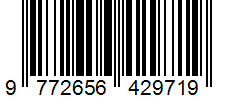GROSS UP BERMANFAAT DALAM TAX PLANNING ?
DOI:
https://doi.org/10.26905/j.bijak.v1i1.2778Keywords:
tax planning, gross up method, take home payAbstract
Research on tax planning is mostly carried out until now because it is veryimportant for the company. Companies that have efforts to facilitate Income Tax Article 21 sometimes experience problems. The impact on the company is a fixed tax burden while the funds incurred increase. This study discusses tax planning that must be carried out by the company in an effort to facilitate Income Tax Article 21 so that corporate expenses for Income Tax Article 21 are recognized and employees get benefits namely take home pay not deducted Income Tax Article 21. The findings in this study are that the gross up method obtained Income Tax allowances which are equal to the 21 income tax payable, so the funds issued by the company to facilitate Income Tax Article 21 are recognized by the tax rules. Because the tax allowance is recognized as a burden,corporate income taxbecomes smaller and the employee take home pay does not decrease
Downloads
References
Adityaningsih, E. C. N., Hidayat, K. dan Effendy I. 2016. “Tax Plan Analysis
Beban Pajak Penghasilan Pasal 21 Terhadap Efisiensi Pajak Terhutang
Perusahaan Rokok AA Buring Malang.†Jurnal Perpajakan (JEJAK), Vol.
No. 1
Desai, M. A. dan Dharmapala, D. 2009. “Corporate Tax Avoidance and Firm
Value.†2009. Review of Economics and Statistics, 91(3): 537-546
Direktur Jenderal Pajak. 2005. Peraturan Direktur Jenderal Pajak Nomor:
/PJ/2006. “Perubahan Keputusan Direktur Jenderal Pajak Nomor KEP-
/PJ/2000 Tentang Petunjuk Pelaksanaan Pemotongan, Penyetoran Dan
Pelaporan Pajak Penghasilan Pasal 21 dan pasal 26 Sehubungan Dengan
Pekerjaan, Jasa Dan Kegiatan Orang pribadi.â€
Dyreng, S. D., Hanlon, M. dan Maydew E.L. 2008. “Long-Run Corporate Tax
Avoidance. The Accounting Review.†83(1): 61-82
Graham, J., Hanlon, H., Shevlin, T. J., dan Shroff, N. 2014. “Incentives for Tax
Planning and Avoidance: Evidence from the Field.†The Accounting Review.
(3): 991–1023
James, S. dan Alley, C. 2002. “Tax compliance, self assessment system and tax
administration.†Journal of Finance, and Management in Public Services.
(2): 27-42
Nabilah, N. N., Mayowan, Y. dan Hapsari, N. N. 2016. “Analisis Penerapan
Perencanaan Pajak PPh 21 Sebagai Upaya Penghematan Beban Pajak
Penghasilan Badan (Studi Kasus Pada PT. Z).†Jurnal Perpajakan
(JEJAK), 8(1)
Nazir, Moh. 2005. Metode Penelitian, Bogor: Ghalia Indonesia
Republik Indonesia. 2008. Undang-undang Nomor 36 Tahun 2008 “Tentang
Pajak Penghasilan.â€
Pohan, C. A. 2014. “Pembahasan Komprehensif Perpajakan Indonesia Teori dan
Kasus.†Jakarta : Mitra Wacana Media
Zain, M. 2005. “Manajemen Perpajakan.†Edisi 2, Jakarta: Salemba Empat
Downloads
Published
How to Cite
Issue
Section
License
Authors who publish in JURNAL BISNIS DAN PERPAJAKAN (BIJAK) agree to the following terms:
- Authors retain copyright and grant the journal right of first publication with the work simultaneously licensed under Creative Commons Attribution License that allows others to share the work with an acknowledgment of the work's authorship and initial publication in this journal.
- Authors are able to enter into separate, additional contractual arrangements for the non-exclusive distribution of the journal's published version of the work (e.g., post it to an institutional repository or publish it in a book), with an acknowledgment of its initial publication in this journal.
- Authors are permitted and encouraged to post their work online (e.g., in institutional repositories or on their website) prior to and during the submission process, as it can lead to productive exchanges, as well as earlier and greater citation of published work (See The Effect of Open Access)
JURNAL BISNIS DAN PERPAJAKAN (BIJAK) - D3 Akuntansi, Fakultas Ekonomi dan Bisnis, Universitas Merdeka Malang Published by University of Merdeka Malang, is licensed under a Creative Commons Attribution-ShareAlike 4.0 International License.






